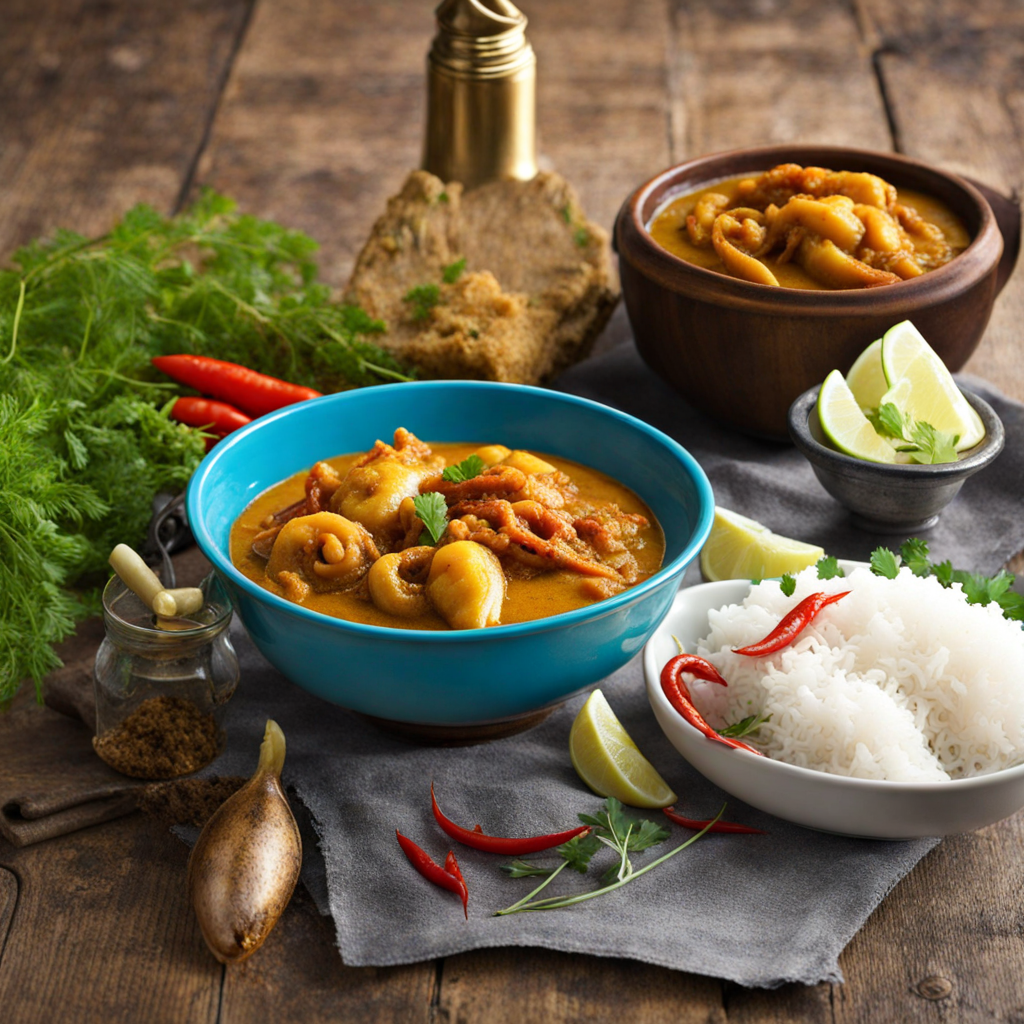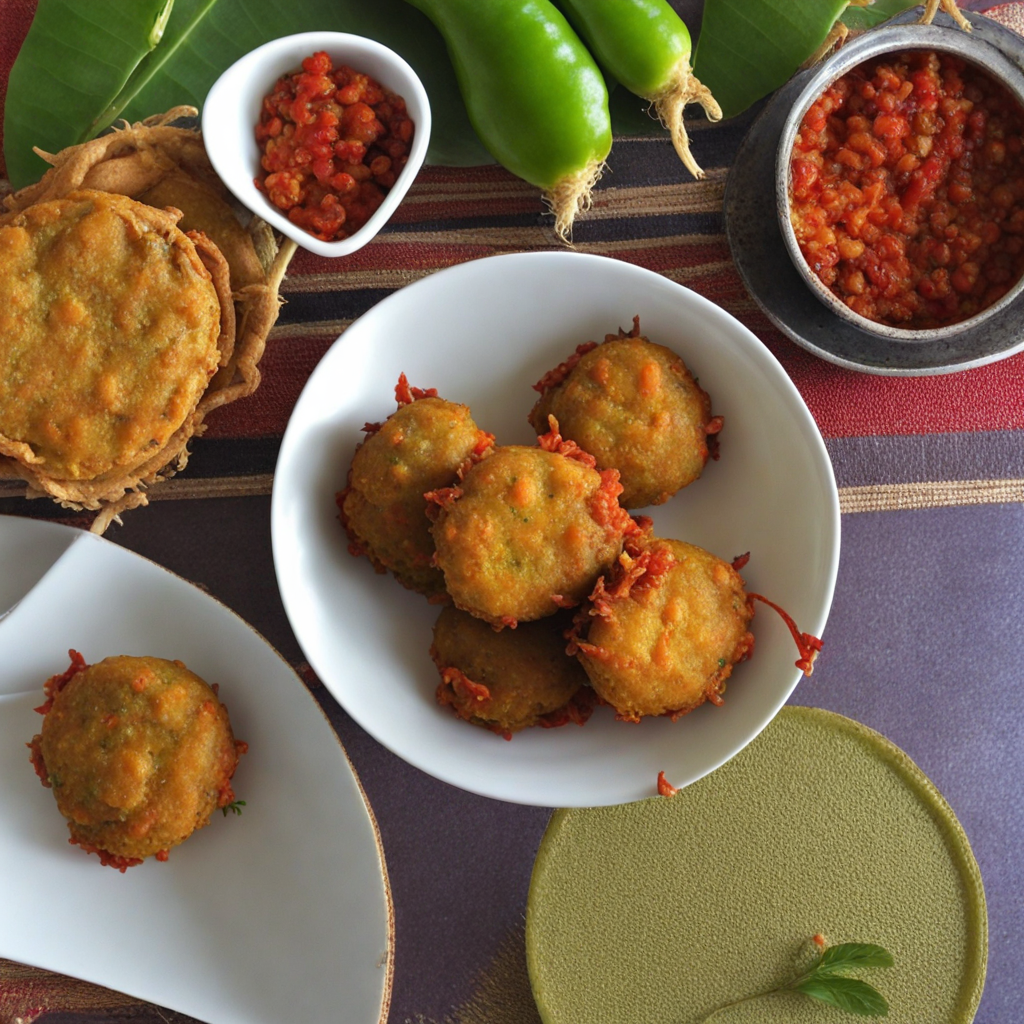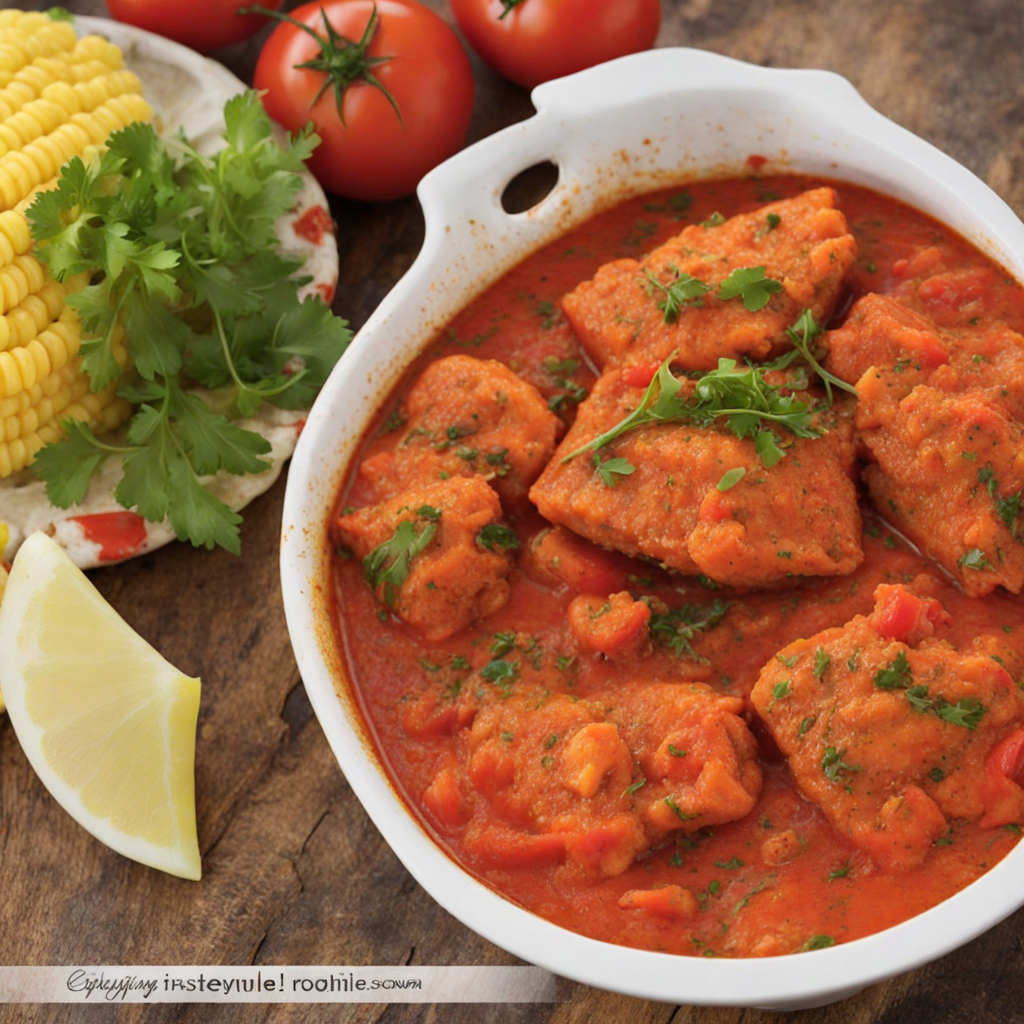Squid Curry
Squid Curry is a delightful dish that showcases the vibrant culinary heritage of Mauritius, blending flavors from various cultures including Creole, Indian, and Chinese influences. The star of the dish, tender squid, is simmered to perfection in a rich, aromatic curry sauce. This sauce is typically crafted with a medley of spices such as turmeric, cumin, coriander, and chili, creating a warm and inviting flavor profile that is both complex and comforting. The addition of fresh ingredients like tomatoes, onions, and garlic enhances the overall taste, while coconut milk often provides a creamy texture that balances the spices beautifully. In Mauritius, squid is a popular seafood choice, and when prepared in curry, it absorbs all the flavors of the spices, resulting in a dish that is both savory and slightly sweet. The squid is cut into rings or left whole, allowing it to soak up the curry sauce as it cooks. Accompanying the dish are typically fragrant basmati rice or fluffy naan bread, which serve as the perfect vehicles for sopping up the rich sauce. The combination of the tender squid and the aromatic curry creates a satisfying meal that leaves a lasting impression on the palate. What makes Squid Curry particularly appealing is its versatility; it can be adjusted to suit various spice tolerances and can be garnished with fresh herbs like cilantro or parsley for an added touch of freshness. Whether enjoyed as a comforting weeknight dinner or served at a festive gathering, this dish embodies the essence of Mauritian cuisine, inviting food lovers to embark on a flavorful journey that highlights the island's unique culinary identity.
How It Became This Dish
The History of Kari Ourite: A Culinary Treasure from Mauritius Kari Ourite, a beloved dish from the island nation of Mauritius, is a vibrant testament to the intricate tapestry of cultural influences that define Mauritian cuisine. This delightful octopus curry, rich in flavor and tradition, encapsulates the history of the island itself—one of diversity, resilience, and fusion. #### Origins of Kari Ourite Mauritius, located in the Indian Ocean, has a history marked by colonial conquests and the mingling of various cultures. The island was uninhabited when the Portuguese first discovered it in the 16th century, but it was the French who established the first significant settlement in the 18th century. The arrival of the French brought with it a culinary tradition that blended with the indigenous culture and later included influences from Indian, Chinese, and African cuisines. Kari Ourite's roots can be traced back to the early 19th century, when Indian laborers were brought to the island to work on sugar plantations following the abolition of slavery. This influx of Indian workers introduced a wealth of spices, cooking techniques, and dishes, many of which became integral to Mauritian cuisine. Kari, which means 'curry' in both Hindi and Tamil, reflects this Indian heritage, while Ourite, meaning 'octopus' in Mauritian Creole, highlights the island's abundant marine resources. #### Cultural Significance Kari Ourite is more than just a dish; it is a symbol of Mauritian identity and cultural heritage. The preparation and consumption of Kari Ourite often bring families and communities together, emphasizing the importance of shared meals in Mauritian society. Traditionally, this dish is served with rice and accompanied by a variety of pickles and chutneys, creating a communal dining experience that is integral to Mauritian culture. The dish also holds spiritual connotations. In a country where Hinduism is one of the predominant religions, the act of cooking and sharing food is often seen as a form of devotion and gratitude. Kari Ourite, with its complex flavors and vibrant colors, becomes a centerpiece during family gatherings, festivals, and religious celebrations, reinforcing the bonds between generations. #### Ingredients and Preparation The traditional preparation of Kari Ourite reflects the diverse influences that have shaped Mauritian cuisine. Fresh octopus is the star ingredient, often caught by local fishermen who use traditional fishing methods. The octopus is usually cleaned and cut into pieces, then marinated with a blend of spices such as turmeric, garlic, ginger, and chili. This marination not only enhances the flavor but also tenderizes the meat, ensuring a succulent outcome. The cooking process is equally significant. The marinated octopus is sautéed in a base of onions, tomatoes, and curry leaves, creating a fragrant and flavorful sauce. Coconut milk is often added to provide creaminess and balance the spices, resulting in a dish that is rich and satisfying. The final touch usually involves simmering the curry until the octopus is tender and infused with the aromatic spices. While the traditional recipe remains popular, variations of Kari Ourite have emerged over time, incorporating different spices, vegetables, and even alternative seafood, reflecting the evolving tastes of Mauritians and the influence of global cuisine. #### Evolution Over Time As Mauritius became more cosmopolitan throughout the 20th century, the culinary landscape continued to evolve. The island’s strategic location along trade routes facilitated the exchange of ideas and ingredients, further enriching its cuisine. The introduction of new cooking techniques and international flavors has led to modern interpretations of Kari Ourite that appeal to both locals and tourists alike. The rise of the tourism industry in the late 20th century also played a significant role in the evolution of Kari Ourite. As visitors flocked to the island, chefs began to experiment with the dish, presenting it in fine dining establishments and adapting it to suit diverse palates. This exposure has not only elevated the status of Kari Ourite but has also sparked a renewed interest in traditional Mauritian dishes, prompting chefs to explore their origins and cultural significance. In recent years, there has been a growing movement towards sustainable seafood practices in Mauritius, promoting the use of locally sourced octopus and encouraging responsible fishing methods. This shift reflects a broader awareness of environmental issues and a desire to preserve the island's natural resources for future generations. Consequently, Kari Ourite serves as a reminder of the delicate balance between culinary tradition and sustainability. #### Contemporary Resurgence The 21st century has seen a resurgence of interest in Mauritian cuisine, with Kari Ourite at the forefront. Food festivals celebrating local cuisine, culinary workshops, and cooking shows have brought attention to traditional dishes, allowing younger generations to connect with their heritage. Furthermore, social media platforms have enabled home cooks and chefs to showcase their interpretations of Kari Ourite, sparking global interest in this unique curry. Restaurants in Mauritius and abroad now feature Kari Ourite on their menus, often accompanied by stories of its cultural significance and history. This newfound appreciation has not only elevated the dish but has also contributed to a broader recognition of Mauritian cuisine as a vibrant and diverse culinary tradition. #### Conclusion Kari Ourite is more than just an octopus curry; it is a reflection of Mauritius's rich cultural heritage and the island's journey through time. From its origins rooted in the blending of various culinary traditions to its contemporary adaptations, Kari Ourite embodies the spirit of Mauritius—a fusion of influences, flavors, and experiences. As Mauritians continue to celebrate and share this beloved dish, Kari Ourite remains a vibrant symbol of identity, community, and the enduring legacy of a diverse culinary tradition. The story of Kari Ourite is not just about food; it is a narrative of connection, history, and the shared experience that unites people across generations.
You may like
Discover local flavors from Mauritius







